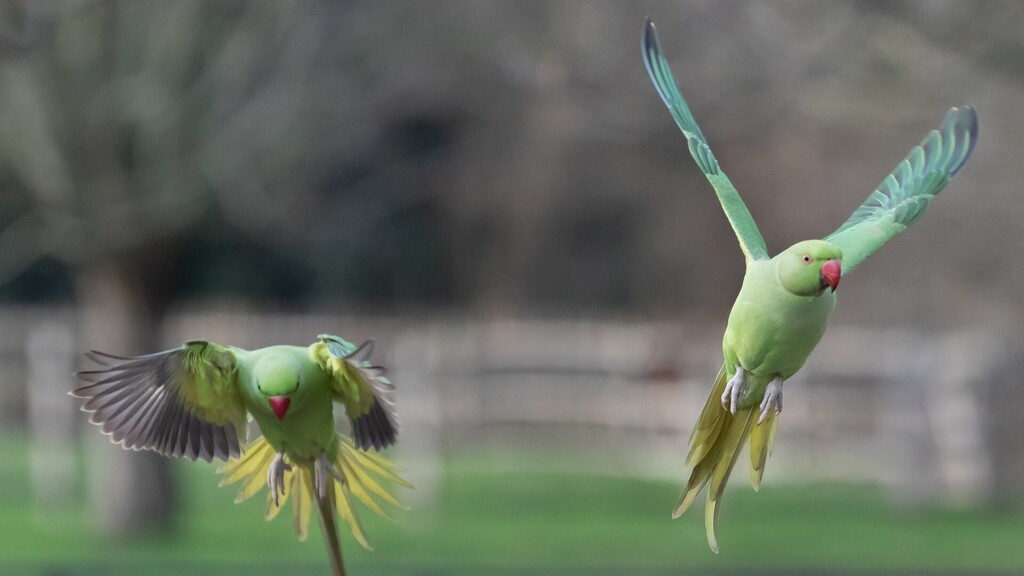

Alien species that establish themselves in new habitats can lead to changes within ecosystems or have an impact on biodiversity. However, not all species are problematic for nature conservation.
The species that occur in nature in our country are known as native or indigenous species. Alien species are introduced into new areas through human influence, either intentionally (e.g. through importation as a crop) or unintentionally (e.g. through the introduction of ballast water on ships).
Since the Neolithic period, when agriculture began, there have been repeated introductions and colonisations of alien species in Central Europe. This process was significantly influenced by the increase in trade and transport. The discovery of America in 1492 marked an important turning point: species that had previously been introduced are known as archaeobiota. Around 300 such species are established in Germany. These include the field hamster, the pheasant and the corn poppy.
Species introduced after 1492 are known as neobiota. There are currently around 900 established neobiota species in Germany, which corresponds to around one per cent of the total of 74,000 established species. The largest group of neobiota are plants (neophytes) with around 470 established species, including crops such as potatoes and maize. There are also invertebrates and vertebrates (neozoa) with a total of around 320 species and fungi (neomycetes) with just under 100 species.
Over the last 170 years or so, the number of neobiota species has increased significantly, mainly due to global trade and transport. At the same time, the number of alien species that were previously only found sporadically in the wild has also risen sharply. Among the neobiota, around 1,600 plant species, around 40 species of fungi and over 450 animal species are currently considered to be endangered. The number of unreported cases is likely to be high, particularly in the case of invertebrates, lower plants and fungi, as these have not been adequately recorded to date.
The majority of alien species do not pose a direct conservation problem and are subject to general species protection for wild species. Some species can even be perceived as an enrichment. Nevertheless, there are some alien species that are considered "invasive" as they can threaten biodiversity in their new habitat.
In Central Europe, due to the long history of land use and geographical permeability, invasive species are less of a threat to biodiversity than on isolated islands, for example, which have only been confronted with alien species in recent centuries. However, the predicted global warming is expected to lead to an increased spread of alien species and thus an increased risk from invasive species.
The negative effects of invasive species on nature are manifold. They can unbalance ecosystems and displace native species. According to the World Biodiversity Council (IPBES), the "invasion of alien species" is one of the five main causes of species extinction worldwide. Around one fifth of the earth's surface is threatened by invasive plants and animals, which has a negative impact on native species, ecosystem functions and the contributions of nature to humans. In addition, invasive species can also cause economic and health problems, for example as pests or by transmitting diseases.
To counteract the problem of invasive species, it is internationally recommended that a three-stage approach be adopted: Prevention, early warning systems and immediate containment measures. The introduction of further alien species should be prevented as far as possible, and newly emerging invasive species should be recognised at an early stage and their spread contained for as long as possible.
The early warning system comes too late for the bullfrog. It is spreading rapidly in Germany and is problematic in that it competes with all native amphibians for food. Due to its enormous size of up to 20 cm, it also eats fish, earthworms, snails and even its own kind. In America, it has predators such as buzzards, grey herons, martens and water snakes. One female lays around 20,000 eggs. This allows it to spread explosively. It is therefore now authorised to be hunted in Rhineland-Palatinate.
Preventing the spread of the neophyte giant hogweed also comes too late.
It is now widespread in Germany, particularly along rivers and streams, but can also be found on fallow fields and meadows.Due to its dense and tall growth of 2 to 5 metres, it significantly changes the landscape and displaces native species.Its photoxic effect, which is harmful to human health, is particularly problematic.
Herbicides are used for large-scale control.Individual plants or small stands can be dug up in spring/autumn with appropriate protective clothing and killed by cutting off the roots.Mowing or cutting off the inflorescence at the beginning of fruit ripening (end of July) can also kill the plants.
Not all newly immigrated neophytes or neozoans are generally problematic.According to the Federal Agency for Nature Conservation, most of the alien species that have colonised our country pose no threat to nature or health.However, around ten per cent would cause problems in terms of nature conservation.
Naturefund is committed to healthy and resilient ecosystems.
Discover current nature conservation projects here!
Sources:
BfN, Tagesschau, IPBES, BUND, BMUV
Share now: